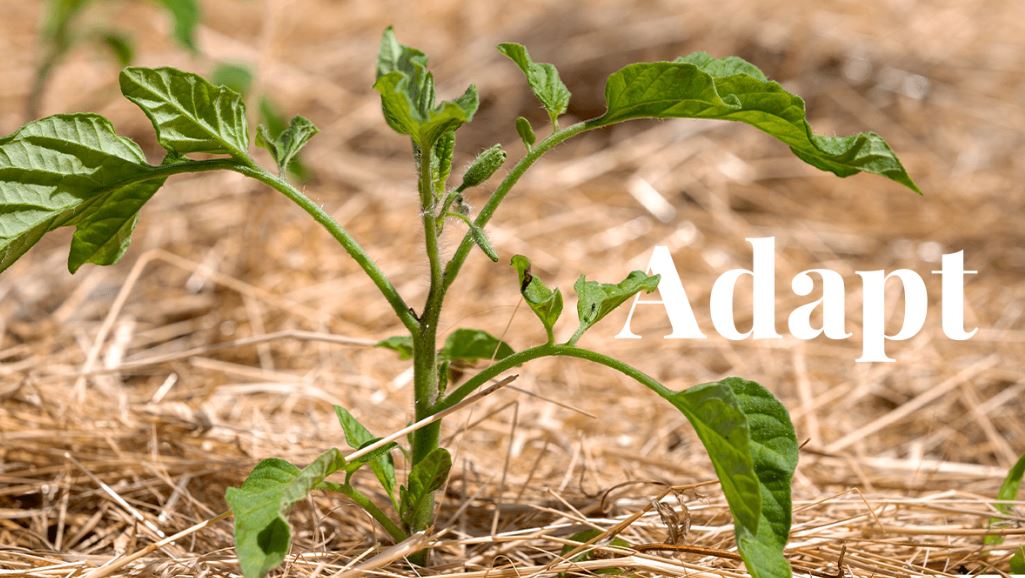A Time-Honored Technique Revisited
Dry farming, a practice that eschews irrigation, is making a comeback in the Western United States. As climate change exacerbates water shortages, this ancient technique offers a sustainable alternative for agriculture. By relying on moisture stored in the soil from rainy seasons, dry farming produces crops that are not only more flavorful but also more resilient to drought conditions.
The Revival of Dry Farming: Addressing Modern Water Challenges
Dry Farming’s Historical Context
Historically, dry farming has deep roots, tracing back millennia. However, it fell out of favor in the 20th century with the advent of modern irrigation techniques. Today, as farmers face increasing water scarcity, especially in states like California, dry farming is gaining renewed interest. California, where agriculture accounts for a staggering 80% of water use, is particularly poised to benefit from this water-saving practice.
How Dry Farming Works: The Science Behind the Practice
Understanding the Mechanism
Contrary to common belief, dry farming does not mean growing plants without water. As Amy Garrett, president of the Dry Farming Institute, explains, dry-farmed crops utilize moisture retained in the soil. This method requires a specific climatic pattern: a wet season to saturate the soil, followed by a dry growing season where plants access stored water.
Techniques Employed
Key techniques include planting earlier in the season to leverage soil moisture from winter rains and spacing plants more widely to allow roots to access sufficient water. Mulching and planting in furrows are also used to minimize evaporation and wind exposure.
Advantages and Limitations of Dry Farming
Pros of Dry Farming
Dry farming offers several benefits beyond water conservation. For instance, it reduces the need for irrigation infrastructure, thereby cutting down on the use of plastics associated with drip tapes and hoses. Additionally, dry-farmed crops generally exhibit better flavor and longer shelf life. Studies by Oregon State University showed that dry-farmed winter squash remained marketable longer than their irrigated counterparts, making them an attractive option for small-scale farmers aiming for sustainability.
Cons of Dry Farming
However, dry farming has its downsides. The practice typically results in smaller yields and smaller-sized produce. Dry-farmed plants need more space, reducing the total number of plants that can be grown per acre. This can be a significant economic consideration for farmers, as smaller harvests mean higher costs per unit of produce.
Real-World Applications and Success Stories
Farmers Adopting Dry Farming
Catherine Nguyen, a farmer in Oregon’s Willamette Valley, has been dry-farming for two years. Her experience highlights both the challenges and rewards of this method. Beyond saving water, Nguyen has noticed a significant reduction in weeds and plastic usage, aligning with her commitment to environmentally friendly farming practices.
Success in the Wine Industry
In California’s Napa Valley, Dominus Estate exemplifies the potential of dry farming. The vineyard’s dry-farmed grapevines produce superior wines by drawing deep into the soil, absorbing a complex array of minerals that enhance flavor. This method not only conserves millions of gallons of water but also underscores the environmental and economic benefits of dry farming.
The Future of Dry Farming: Challenges and Potential
Adapting to Climate Change
As climate change progresses, the viability of dry farming will depend on adaptability. Some crops may become unsuitable for dry farming under increasingly arid conditions. Farmers may need to switch to more drought-resistant crops, such as those with deep root systems or species evolved in arid environments.
Economic Considerations
While dry farming may not become mainstream, it presents a viable alternative for specialty crops and small-scale farmers. The higher market value of dry-farmed produce, due to its superior taste and longer shelf life, could offset lower yields and higher production costs.
Conclusion: Embracing Sustainable Practices
Dry farming, with its rich history and modern-day applications, offers a sustainable path forward in agriculture. As water resources become more unpredictable, this practice provides a means to conserve water, reduce environmental impact, and produce high-quality, flavorful crops. By embracing dry farming, farmers can contribute to a more sustainable future while maintaining the delicate balance between nature and agriculture.
Summary Table: Key Learning Points
| Key Learning Points | Description |
|---|---|
| Historical Roots | Dry farming dates back millennia but declined with modern irrigation. |
| Mechanism | Relies on soil moisture from rainy seasons rather than irrigation. |
| Techniques | Includes early planting, wider spacing, mulching, and furrowing. |
| Benefits | Conserves water, reduces plastic use, produces flavorful and long-lasting crops. |
| Limitations | Lower yields, smaller-sized produce, higher costs per unit. |
| Success Stories | Examples include Catherine Nguyen’s farm and Dominus Estate’s vineyard. |
| Future Prospects | Adapting to climate change, potential for specialty crops, economic considerations. |
| Sustainability | Contributes to a sustainable future by balancing nature and agriculture. |

Sunil Garnayak is an expert in Indian news with extensive knowledge of the nation’s political, social, and economic landscape and international relations. With years of experience in journalism, Sunil delivers in-depth analysis and accurate reporting that keeps readers informed about the latest developments in India. His commitment to factual accuracy and nuanced storytelling ensures that his articles provide valuable insights into the country’s most pressing issues.



